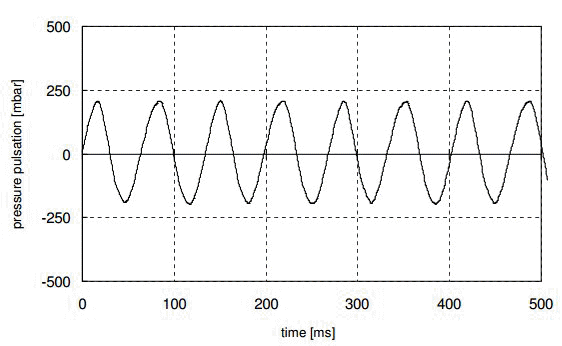 |
Satish Lele lelepiping@gmail.com |
View this page as YouTube Video Presentation
However, with new plants the user is confronted with the problem that these experience values are non-existent. This is the case during start-up when the first alarm indications occur, such as subjective major vibrations, noises caused by secondary effects, screws falling out and similar. An objective assessment of the situation is then required.
The description of the excitation and transmission mechanisms and the assessment of the situation is possible with the measurement of piping, machine and foundation vibrations as well as pressure pulsations in the pipe. In addition, effective reduction measures for improving the situation can be processed on the basis of the available measuring values.
Cause of piping vibrations: The cause of piping vibrations can be attributable to the mechanical coupling of vibrating components such as motors, compressors or the foundation. Then again, a vibration excitation can also occur as a result of pulsating media within the piping itself.
The rigid coupling to vibrating components is frequently encountered in practice (e.g. pneumatic control lines). These are rigidly attached to vibrating parts such as valves and piping so that there is an direct vibration excitation in this case. In addition, the distance between supporting locations is relatively large where control and measuring lines are concerned. These lines frequently break off when excitation frequency and natural frequency coincide.
The vibration excitation caused by pulsation in the medium is attributable to the discontinuous output of many compressors. Particularly with reciprocating compressors, the operation of the compressor produces pressure pulsations with amplitudes of more than 2 % of the static pressure in the piping. If the excitation frequencies caused by the compressor coincide with the acoustical resonance of the connected piping system, the pressure pulsations are additionally increased.
The pulsations generate forces at piping internals, pipe elbows etc. which frequently and excessively exceed the static requirements of piping supports.
In a reciprocating compressor plant, piping vibrations at pipes between the 1. and 2. stages have been the subject of complaint. Measurements of pressure pulsations and piping vibrations confirm at first the high vibration level at local piping sections.

Reduction of piping vibrations: Exact knowledge of the excitation and transmission mechanisms is required for the refurbishment of the vibration situation in piping. If the piping vibrations are subject to the coincidence of acoustical or structure natural frequency with the excitation frequency of the connected machine as a first step, an improvement of the situation can be obtained by means of shifting of the resonance frequency.
The structure natural frequency of a piping can be changed by attaching additional supports. The support must have a sufficient rigidity here because no adequate shifting of the natural frequency can be otherwise obtained. A further measure could be, for example, additional supporting and/or relocating of armatures and valves which can have a considerable influence on the local natural frequency due to their concentrated mass.
If acoustical natural frequencies are responsible for the piping vibrations, the pulsation in the piping can be reduced by means of
- change of the piping lengths
- change of the piping internals - e.g. relocating of orifices
- application of additional pulsation-reducing measures
 to get all the information as a eBook
to get all the information as a eBook
